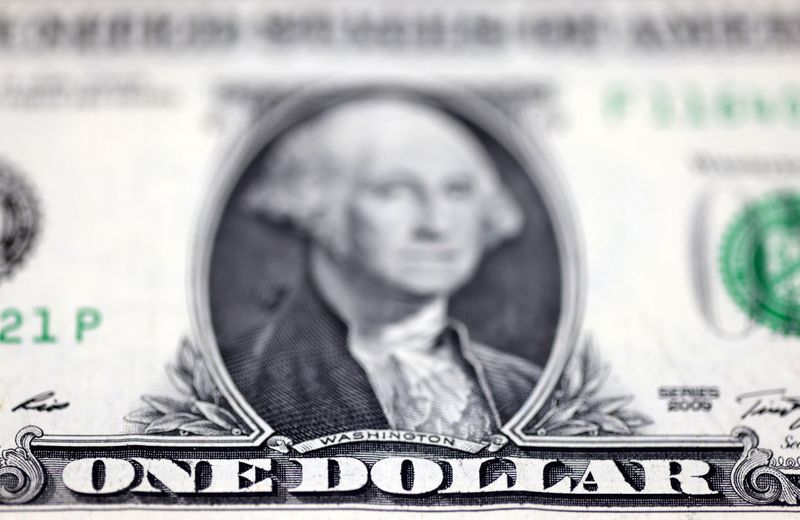Dollar firms as US rates outlook dominates
By Rae Wee
SINGAPORE (Reuters) - The dollar was on the front foot on Tuesday as the prospect of higher-for-longer U.S. interest rates remained top of investors' minds, leaving other currencies struggling near milestone lows.
In a holiday-curtailed week, trading volumes are likely to thin out as the year-end approaches. The lack of major economic data releases also means the rates theme is likely to remain the main driver of moves in the foreign exchange market.
The yen was pinned near a five-month low and last stood at 157.19 per dollar, having already fallen 4.7% this month into territory that is keeping traders on alert to any intervention from Japanese authorities.
The Bank of Japan (BOJ) last week kept rates on hold and stayed vague on when it could next raise rates, an outcome which was in stark contrast to the Federal Reserve's hawkish tone just a day earlier, where it projected a measured pace of rate cuts in 2025.
That sent the yen sliding, with the Japanese currency struggling to recoup its losses.
"The shifts in Fed-BOJ policy divergence are now more likely to weaken the JPY," said Vishnu Varathan, head of macro research for Asia ex-Japan at Mizuho (NYSE:MFG ) Bank.
"JPY carry trades could, in defiance of a step-up in volatility or uncertainty, remain in play as two critical factors – supported 'carry returns' and mitigated capital risks of JPY squeeze – conspire favourably."
Elsewhere, the euro last bought $1.0403 but was not far from a two-year low it touched in November, while sterling eased 0.01% to $1.2534.
Against a basket of currencies, the U.S. dollar was perched near a two-year peak of 108.54. It was last at 108.10.
While a benign U.S. inflation reading on Friday eased some concerns about the pace of Fed cuts next year, markets are still pricing in just about 35 basis points worth of easing for 2025, in turn underpinning the dollar.
"Our base case is that the dollar will make some further headway next year as the U.S. continues to outperform, the interest rate gap between the U.S. and other G10 economies widens a little further, and the Trump administration brings in higher U.S. tariffs," said Jonas Goltermann, deputy chief markets economist at Capital Economics.
Ahead of U.S. President-elect Donald Trump's return to the White House in January, global central banks have urged caution over their rate paths due to uncertainty on how Trump's planned tariffs, lower taxes and immigration curbs might affect policy.
Down Under, the Australian dollar eased 0.11% to $0.6242, while the New Zealand dollar dipped 0.04% to $0.5648.
The Reserve Bank of Australia (RBA) will release the minutes of its December policy meeting later on Tuesday, the last remaining item on the calender for the year.
The RBA earlier this month held policy steady but unexpectedly opened the door to a rate cut next year.
Source: Investing.com
